Fast & Prime bags and Hamlyns of Colyton

Introduction
I saw some photos of Fast & Prime bags on the Leica Rumors website earlier this year, then, later on, there were some pictures on facebook. Fascinated I contacted Neal Simons of Fast and Prime. It turns out that he is based in Charmouth, Dorset, which is only a little way out of our well travelled route from Norfolk to Cornwall.
We arranged to drop in on Neal, he kindly took some time off to show us his immaculate workshop in Charmouth, and to take us around Hamlyns Tannery in Colyton, where he gets the leather for his bags and straps. Mr Parr kindly gave permission, and Neal showed us all around the Tannery - the staff were really polite and helpful, and the place is simply wonderful.
Neal Simons started life in Pittsburgh, moved to Miami, where he met his wife Lauren, an illustrator from London - He worked for several fashion houses before starting his own fashion business. Disillusioned with the industry he spent 5 years making the interiors for renovated classic cars before deciding that he wanted to create perfectly made utilitarian goods. Together with Squidgie Trimming, an experienced saddler, he started Fast & Prime. Neal and Lauren have now moved to Charmouth where their little girl goes to school near the beach.
Fast & Prime Bags
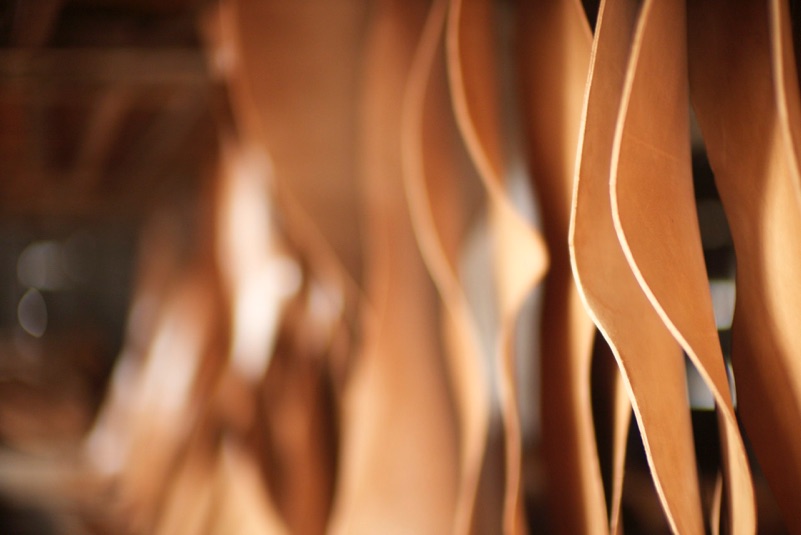
Neal Simons has set out to make the perfect utilitarian bag. There are currently 3 sizes of the Agent case, the 66 (which basically takes one body); the 86 which is a little larger, and the 86J (Jumbo) which will take two Leica M bodies with lenses attached (and room for a small extra lens tucked under each body).
Each bag takes around 70 hours to make. The stitches are individually tied with beeswax coated linen threads (so that they don’t rot, and if one stitch breaks others stay intact). Neal has a very organised schedule for delivery, each bag is made to order and is stamped with the new owner’s initials: When ordering you’ll be given a delivery slot, the word from others is that although they may be several months in the future, the delivery is always reliable.
The image below shows the 86J with two Leica M(240) bodies, one with the 35 ‘lux FLE and the other with the 75 summicron. NB the straps visible in the iphone snap below belong to me, and were not made by Neal.
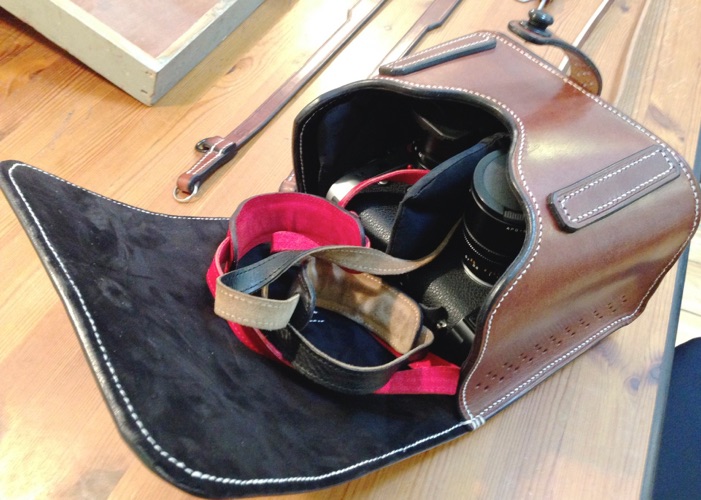
Half cases aren’t really my thing (I like my cameras thin!) , but Neil also makes very sturdy half case called The Tank this is made of the same tanned hide as the Agent cases, (4-6mm thick Equestrian hide).
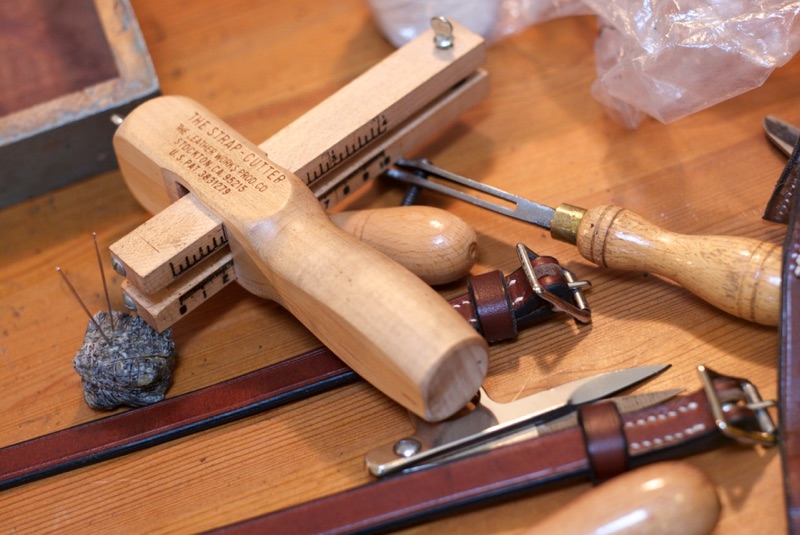
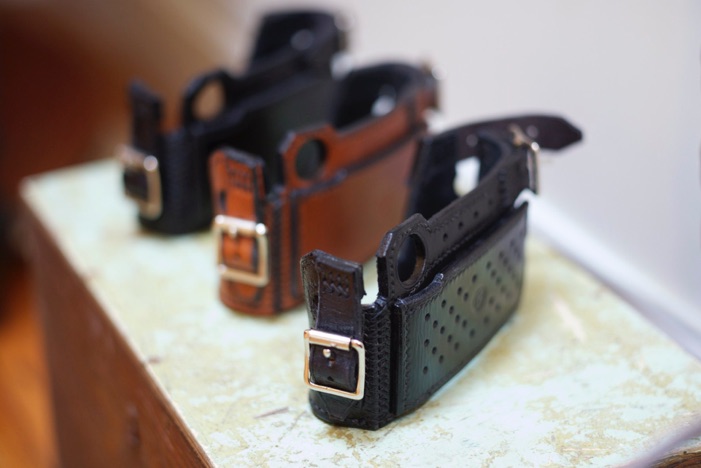
UHL Holster / Lens Case system
This is a well thought out system of holsters for cameras, and cases for lenses - I wasn’t able to photograph these in detail on my visit, but Neal has clearly described them on his website. (click on the title above to go straight there).
There are three types of Holster - one to go on a waist belt with 2 heavy duty belt loops, and another to go on on the shoulder strap with D rings - the third type is a hybrid with both belt loops and D rings.
Straps Mono Strap and Lanyard - and the Kepler Harness
Fast & Prime make a number of different straps, both for shoulder and for waist to go with the Tank cases, UHL and Agent cases. They also make Mono straps and Lanyards - these are made out of a single piece of leather. The Kepler Harness is an ingenious piece of bondage which keeps your camera firmly available on your chest at all times ready to be lifted to your eye - Perfect for hiking or other activities when you may want quick access to your camera, but wish to keep your arms free.
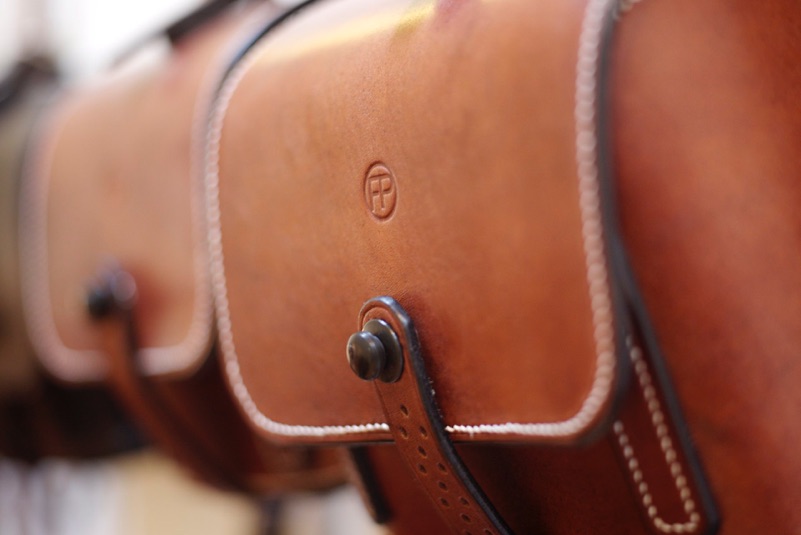
We have a huge selection of wonderful bags available for use with our camera gear - from the traditional Canvas and Leather bags made by Billingham and Fogg (loosely based around traditional fisherman’s bags) to the higher tech materials from the likes of Lowepro and the more modern luxury bags from Artist & Artisan and others. These come in all shapes and sizes, from belt bags to rucksacks, and in all types of material, from leather to nylon.
Fast & Prime use only highest quality organic oak bark tanned hide - this is very resilient tough, and also fairly stiff. However, it’s also relatively light. In the bend areas (such as the flap on the Agent case) it will quickly become pliable with continued use.
To get the best understanding of exactly what Fast & Prime provide - have a look at their elegant and excellent website: www.fastandprime.com.
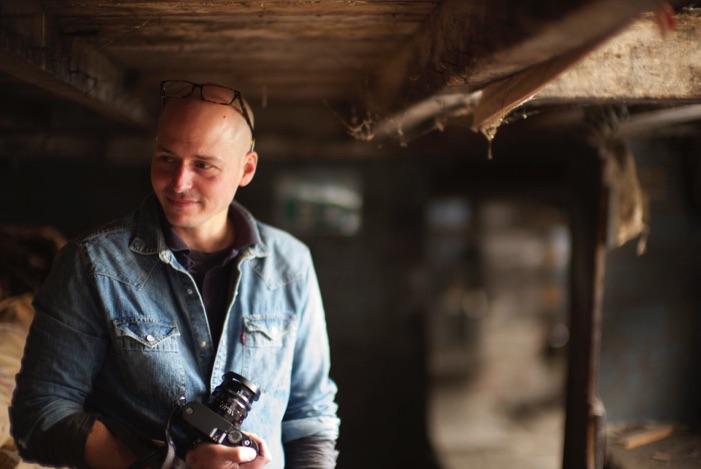
Neal Simons of Fast & Prime at the Colyton Tannery
Agent 86J with two Leica M bodies and lenses
Tank half cases in black and conker
The Tannery at Hamlyns in Colyton is the last Traditional Oak Bark distillery in the UK. It has been a Tannery since Roman times. The actual tanning procedure has not changed a great deal in centuries, and it’s fascinating to see how the hides are produced.
Contrary to what you might suspect, the tannery doesn’t smell bad, some other tanning techniques (urine amongst them) can create a pretty singular aroma, but not Oak Bark Tanning.
A mixture of Oak Bark and Acorn cases from renewable sources are soaked to provide the tannin liquor in which the tanning will be done.
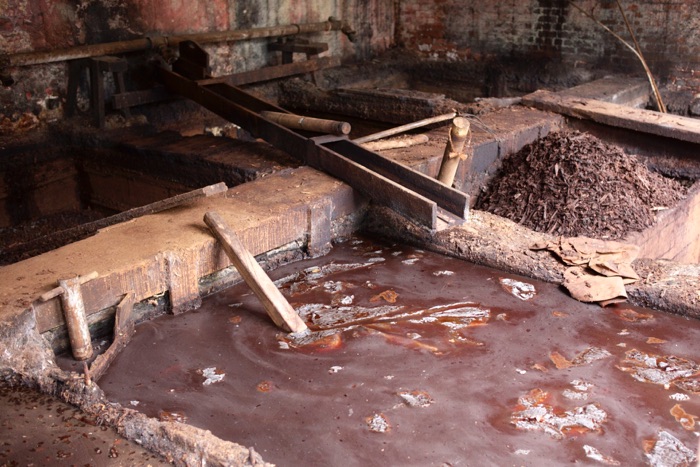
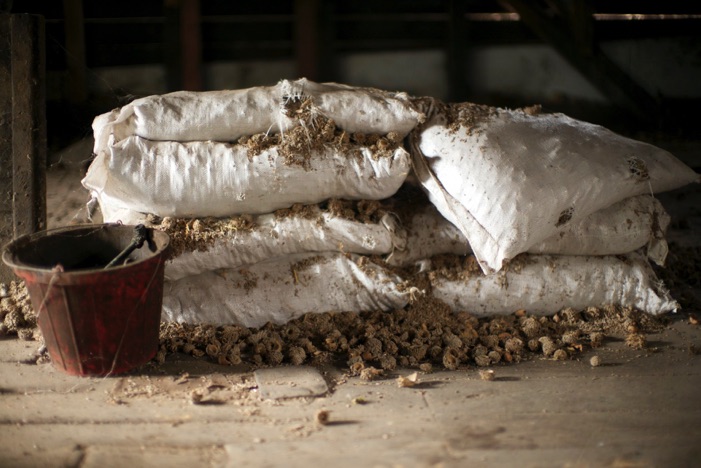
Oak Bark being soaked to extract the tannins
bags of Turkish acorn shells
The Hides arrive having been salted. They are then soaked in lime to loosen the hair, the hair is then scraped off
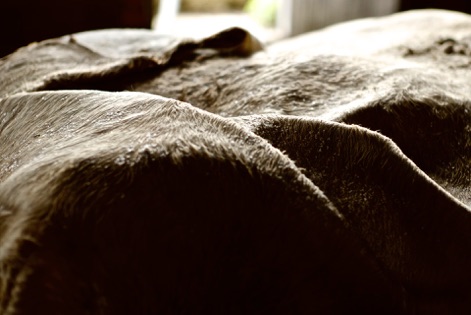
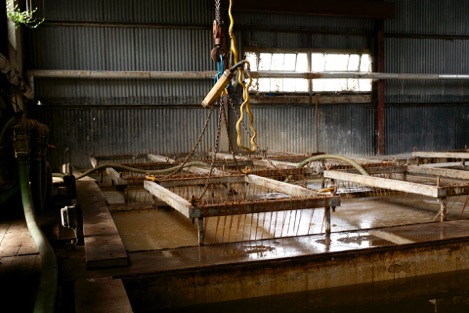
salted hides ready for processing
Hides are soaked in Lime and scraped
Whilst still wet, the hides are cut to shape, washed and then put into the first of the tanning handler pits. They are moved from one pit to another once a week over a period of a year. Each pit contains a progressively stronger tanning liquor
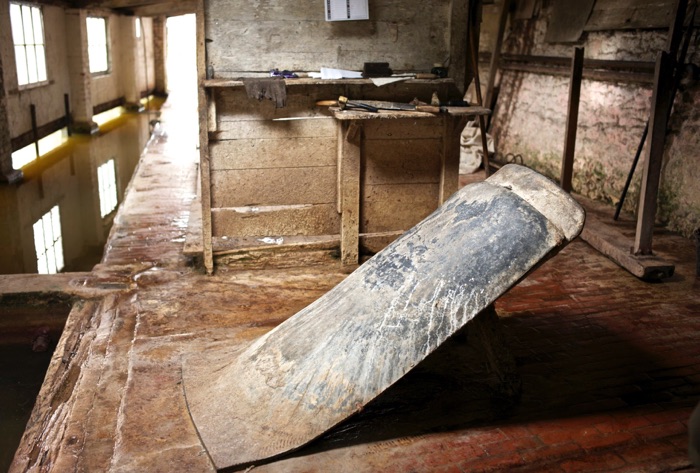
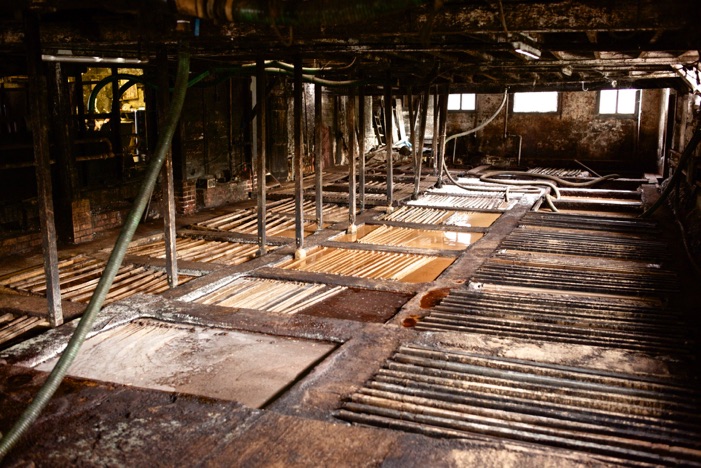
Hides being washed and cut to shape
Hides suspended in the Tanning Handler pits
After tanning the hides are hung up to dry out
After Tanning has finished, and the hides are dried, they are ready to be dyed (if required) before delivery to the customer.
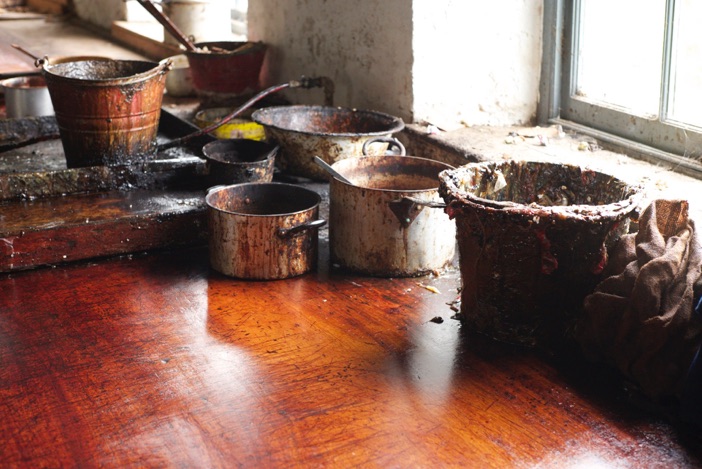
It was a fascinating day, I can’t recommend enough that you visit the websites of Fast & Prime and for J & FJ Baker and Co.
I’d like to thank Neal Simons particularly for giving us the opportunity to visit his workshop and also the tannery.
For those who are interested, the photos were all taken with a Leica M camera, with either an f0.95 50mm Noctilux, or an f1.4 35mm summilux FLE. Except the snap of two cameras in the 86J bag, taken with an iphone.
NB, This article is not a commercial venture, it was a fascinating day out for me, and it’s nice to have an opportunity to spread the word about an interesting and adventurous project. It isn’t a review either until I’ve actually used a bag I can only tell you what they look and feel like.
If you would like to see more images please click on the link: